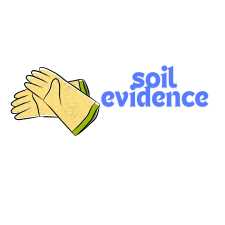1. Integrity and Honesty
It is one of code of conduct for Forensic scientists.
- Uphold truthfulness and transparency in all professional activities.
- Never manipulate, alter, or invent data or findings.
- Base conclusions solely on verifiable evidence and sound scientific practice.
2.Impartiality and Objectivity
- Maintain neutrality in all investigations, regardless of the party involved.
- Refrain from engaging in any activity that could lead to bias or create a perceived conflict of interest.
- Resist influence from external forces, including legal, institutional, or public pressure.
3.Professional Competence
- Accept assignments only when qualified through training, education, or experience.
- Engage in regular skill development through courses, certifications, or seminars.
- Know and acknowledge personal professional boundaries; request expert input when needed.
4.Confidentiality
- Safeguard all sensitive case details unless disclosure is legally mandated or formally authorized.
- Do not share case-related information in public forums or with unauthorized individuals.
5.Clear and Accurate Reporting
- Keep thorough, consistent records for all analytical and investigative work.
- Ensure all reports reflect the facts, remain unbiased, and avoid unsupported opinions.
- Transparently disclose uncertainties, limitations, or conditions affecting findings.
6.Commitment to Quality Standards
- Follow accredited lab procedures and uphold recognized forensic quality guidelines (e.g., ISO standards).
- Take part in routine quality control activities, including audits and proficiency testing.
- Immediately report any procedural mistakes, misconduct, or deviations from protocols.
7.Ethical Courtroom Behaviour
- Provide evidence-based testimony within one’s field of competence.
- Clearly separate factual statements from interpretive opinions during testimony.
- Avoid overstating the impact or certainty of forensic results when addressing the court.
8.Respect for Persons and Rights
- Treat all individuals involved in the forensic process-victims, suspects, and peers-with dignity and fairness.
- Ensure that scientific practices do not contribute to injustice, such as false accusations or wrongful convictions.
9.Ethical and Professional Conduct
- Steer clear of professional engagements that may involve ethical compromise or personal interest.
- Demonstrate integrity and respect in all workplace and investigative interactions.
- .Support the responsible growth of forensic science through mentorship, research, and
ethical innovation.
Qualifications for Forensic Scientists.
Educational qualification
Bachelor’s degree (BSc) in one of the following fields:
- Forensic Science
- Biology
- Chemistry
- Biochemistry
- Molecular Biology
- Physics
- Criminalistics
- Master’s degree (MSc) in
- Specialize in a specific area such as:
- Forensic Toxicology
- Forensic Biology/DNA
- Forensic Chemistry
- Digital Forensics
- Forensic Psychology
Skill
- Critical thinking
- Communication skills
- Objectivity and impartiality
- Time management
Report Writing
1.Cover Page & Contents List
Start your report with key case identification:
- Investigation title or reference number
- Name of the assigned forensic expert
- Submission date
- Affiliated organization or department
- Follow it with a well-organized table of contents to help readers navigate the report with ease.
2.Overview of the Case
Provide a brief and clear summary of the investigation:
- Why the investigation was initiated
- What general steps were followed during analysis
- Highlight the main outcomes or findings
- This section is aimed at readers with no technical background and should avoid complex language.
3.Case Context and Objectives
Set the foundation for the report by answering:
- Who requested the forensic examination?
- What are the main questions or concerns that need addressing?
- Were there any boundaries or limitations affecting the investigation?
- This section outlines the “why” and “how far” of the inquiry.
4.Tools and Methods Used
This part should describe how the analysis was carried out:
- Names and versions of all tools or equipment used
- Description of each process or procedure used during analysis
- Any particular configurations or settings applied
- This ensures another qualified expert could reproduce the investigation under the same conditions.
5.Description of Evidence
This is the core section where all relevant evidence is presented:
- What kinds of evidence were examined (e.g., digital files, physical samples, images)?
- How and where was each item recovered or collected?
- Include visual elements such as diagrams, tables, or photographs
- If applicable, include verification techniques like hash values to confirm data integrity
- Stick to factual details onlyp-this section should not contain analysis or opinions.
6. Interpretation of Results
Now, explain what the findings mean in relation to the case:
- How do the findings support or contradict the case questions?
- Are there any other logical explanations for the results?
- Interpretations must be based on proven methods or scientific reasoning
- This is the analytical heart of the report where facts meet context.
7.Summary and Action Points
Bring the report to a close with a final assessment:
- Clearly state which facts are supported, challenged, or unresolved
- Recommend further analysis, interviews, or follow-ups if necessary
- Avoid personal opinions-focus solely on what the data supports
- This is where decisions are informed, not made.
8.Supporting Documents & References
End the report with materials that back up the investigation:
- Raw output data or analysis logs
- Screenshots from tools used in the process
- Definitions for technical terms used in the report
- List of all resources, tools, or legal standards cited
- This section ensures transparency and professional accountability.



